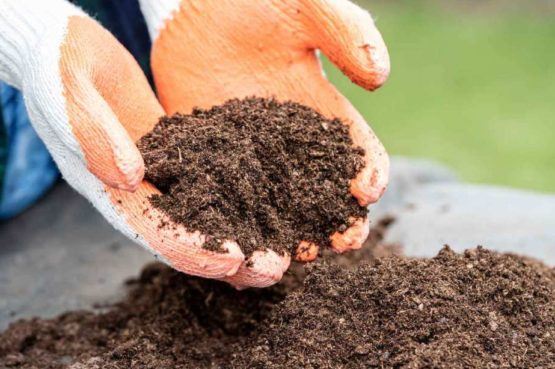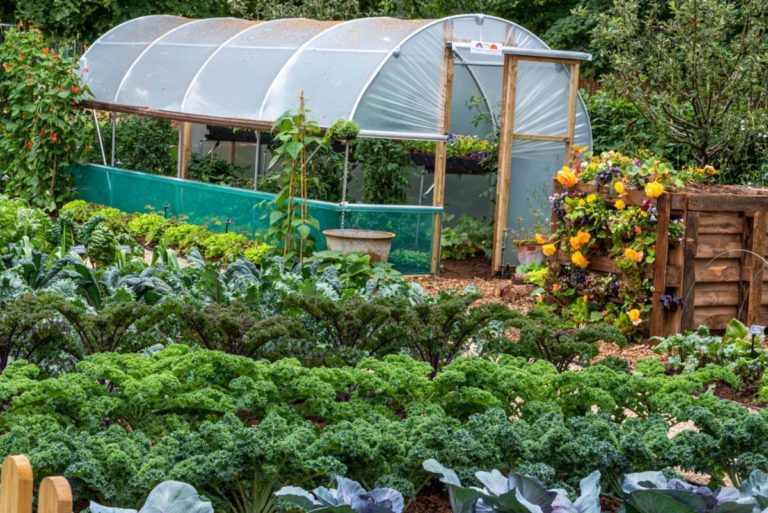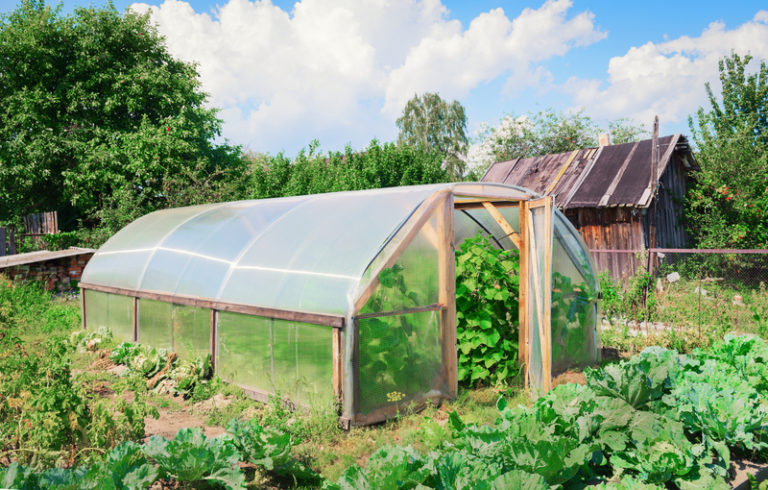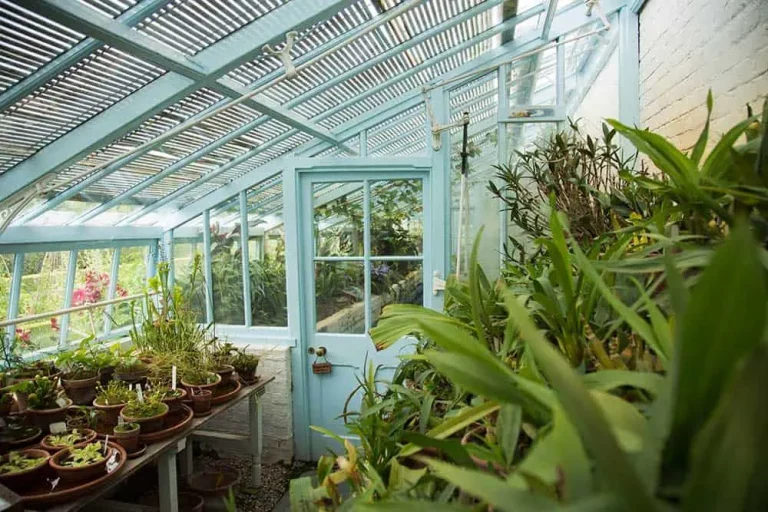Getting your garden off to a great start begins with the soil.
Yes, you heard that right – the foundation of success lies in the dirt beneath your feet.
Or should I say, the quality of the dirt?
You see, not all soils are created equal, and neglecting this important aspect can spell disaster for your garden’s growth and productivity.
With a little know-how and some elbow grease, you too can master the art of soil preparation, setting yourself up for a bountiful harvest season after season.
So grab those gardening gloves, let’s dive in – it’s time to get your hands dirty!
Start with a clean slate
Remove any debris, rocks, and weeds from the soil to prevent them from competing with your plants for nutrients and space.
Before planting, remove any debris, rocks, and weeds from the soil to prevent them from competing with your plants for nutrients and space.
This includes any debris from previous gardening seasons, such as dead leaves or rotting vegetation, as well as any rocks or stones that may be present in the soil.
Weeds, in particular, can be a significant challenge for gardeners, as they can quickly overtake and choke out other plants.
By removing weeds and other debris, you can create a more hospitable environment for your plants to grow and thrive.
Starting with a clean slate can help to prevent the spread of disease and pests, which can be a major concern for gardeners.
By taking the time to remove any debris and weeds from the soil, you can ensure a healthy and productive garden.
Test your soil
Use a soil test kit or send a sample to a lab to determine your soil’s pH level, nutrient content, and texture. This information will help you determine what amendments your soil needs.
Testing your soil is a important step in creating a thriving garden.
By using a soil test kit or sending a sample to a lab, you can determine your soil’s pH level, nutrient content, and texture.
This information is essential in helping you identify which amendments your soil needs to optimize plant growth.
First, let’s talk about pH levels.
Soil pH is a measure of how acidic or alkaline your soil is, and it can greatly impact the availability of nutrients to your plants.
Most vegetables and flowers prefer a slightly acidic to neutral soil pH of between 6.0 and 7.0.
If your soil pH is too high or too low, you may need to add amendments to adjust the pH.
Next, let’s look at nutrient content.
Soil tests can reveal the levels of essential nutrients like nitrogen, phosphorus, and potassium in your soil.
These nutrients are important for plant growth, and knowing their levels will help you determine which amendments to add.
For example, if your soil is lacking in nitrogen, you may need to add a nitrogen-rich fertilizer.
Texture is an important aspect of soil health.
Soil texture refers to the size and arrangement of the soil particles.
A soil with good texture will allow water and air to penetrate easily, while a soil with poor texture may be prone to compaction or erosion.
By testing your soil texture, you can determine if your soil needs to be amended with organic matter like compost or mulch to improve its structure.
Testing your soil is a critical step in creating a thriving garden.
By determining your soil’s pH level, nutrient content, and texture, you can tailor your amendments and fertilizers to your soil’s specific needs.
This will not only improve the health of your plants, but also save you money and reduce waste.
Testing your soil is an essential step in creating a thriving garden.
By using a soil test kit or sending a sample to a laboratory, you can determine the pH level, nutrient content, and texture of your soil.
This information will allow you to tailor your amendments and fertilizers to your soil’s specific needs, which will improve the health of your plants and ultimately lead to a more productive and thriving garden.
The pH level of your soil is a critical factor to consider.
Soil pH measures the acidity or basicity of your soil, and it affects the availability of nutrients to your plants.
If your soil has an optimal pH range of 6.0 to 6.8, your plants will be able to absorb the nutrients they need to grow and thrive.
However, if your soil has a pH that is too high or too low, your plants may struggle to access the nutrients they need.
The nutrient content of your soil is also important to consider.
Soil tests can determine the levels of nitrogen, phosphorus, potassium, and other essential nutrients in your soil.
These nutrients are necessary for your plants to grow and develop healthy roots, stems, and leaves.
A deficiency in any of these nutrients can lead to stunted growth, yellowing leaves, or other health issues in your plants.
The texture of your soil is also important to consider.
Soil texture refers to the proportion of sand, silt, and clay in your soil.
Sandy soils drain quickly, but may lack nutrients and water retention capabilities.
Clay soils retain water well, but may be too dense for proper drainage.
Loamy soils, with a balance of sand, silt, and clay, are generally considered ideal for plant growth.
Understanding your soil’s texture can help you choose the right plants for your garden and ensure that they receive the appropriate amount of water and nutrients.]] Understanding your soil’s properties is important to ensuring the success of your garden.
By testing your soil’s pH level, nutrient content, and texture, you can determine the optimal conditions for your plants to thrive.
A pH range of 6.0 to 6.8 is ideal for most plants, as this range allows for the best nutrient absorption.
If your soil’s pH is too high or too low, your plants may suffer from nutrient deficiencies or poor root development.
Testing for nutrient content will help you determine which nutrients your soil lacks and can guide your fertilization and amendment choices.
Knowing your soil’s texture is equally important, as it affects the amount of water and nutrients your plants receive.
Sandy soils drain quickly but may lack nutrients and water retention capabilities, while clay soils retain water well but may be too dense for proper drainage.
Loamy soils, with a balance of sand, silt, and clay, are generally considered ideal for plant growth, offering the perfect balance of drainage, nutrient retention, and water availability.
By understanding your soil’s properties, you can select the right plants for your garden and provide them with the appropriate amount of water and nutrients, ensuring a successful harvest.
Add organic matter
Incorporate compost, well-rotted manure, or leaf mold into your soil to improve its structure, increase water retention, and provide nutrients for your plants.
To improve the structure, water retention, and nutrient content of your soil, incorporate compost, well-rotted manure, or leaf mold into your soil.
These organic matter supplements will not only enhance the soil’s physical properties but also provide essential nutrients for your plants.
Compost, made from decomposed plant material, is an excellent source of slow-release nitrogen, phosphorus, and potassium, while well-rotted manure offers a rich blend of macronutrients and micronutrients.
Leaf mold, another excellent organic matter, is a decomposed mixture of leaves, twigs, and other plant material that adds a wealth of beneficial microorganisms to your soil.
When incorporating these materials into your soil, make sure to mix them in thoroughly and avoid over-application, as excessive amounts can cause soil compaction and nitrogen depletion.
By adding organic matter, you can not only improve your soil’s quality but also foster a healthy ecosystem that benefits your plants and the surrounding environment.
Balance your soil’s pH
Adjust your soil’s pH level to meet the needs of the plants you’ll be growing. Most vegetables prefer a slightly acidic to neutral soil pH (between 6.0 and 7.0).
Balancing your soil’s pH is a important step in preparing your garden bed for optimal plant growth.
The ideal pH range for most vegetables is between 6.0 and 7.0, which is slightly acidic to neutral.
This range allows for the best availability of essential nutrients for your plants, such as nitrogen, phosphorus, and potassium.
If your soil pH is too high (alkaline) or too low (acidic), it can limit the growth and productivity of your plants.
To adjust your soil’s pH, you can incorporate organic matter such as compost, leaf mold, or well-rotted manure, which can help to neutralize extreme pH levels.
You can also use lime to raise the pH, or elemental sulfur or aluminum sulfate to lower it.
It’s important to note that changing your soil’s pH can be a gradual process, so it’s best to start with small adjustments and monitor your soil’s pH regularly to avoid overcorrection.
By balancing your soil’s pH, you can ensure that your plants receive the nutrients they need to thrive and produce a bountiful harvest.
Improve drainage
If your soil is heavy clay or prone to waterlogging, add organic matter and perlite or vermiculite to improve drainage.
Improving drainage in your garden can be a important step towards creating a healthy and thriving growing environment.
If your soil is heavy clay or prone to waterlogging, adding organic matter and perlite or vermiculite can greatly improve drainage.
Organic matter such as compost, leaf mold, or well-rotted manure helps to break up clay particles and create a more porous soil structure.
This allows water to drain more easily, reducing the risk of waterlogging and preventing root rot.
Perlite or vermiculite can be incorporated into the soil to further improve drainage.
These lightweight materials help to increase the porosity of the soil, allowing water to drain more quickly and preventing water from pooling in the soil.
By incorporating these materials into your soil, you can create a well-draining environment that will support the growth of healthy, thriving plants.
Aerate your soil
Use a garden fork or spade to loosen and aerate your soil, especially if it’s compacted or has been unused for a while.
Aerating your soil is an essential step in preparing your garden for planting.
Compacted soil can prevent water and nutrients from penetrating deep into the soil, which can stunt plant growth and lead to poor yields.
By using a garden fork or spade to loosen and aerate your soil, you can help to improve its structure and increase the amount of air and water that reach the roots of your plants.
This is especially important if your soil has been unused for a while, as it can become denser and more compact over time.
By regularly aerating your soil, you can help to maintain its health and fertility, which will lead to healthier and more productive plants.
To aerate your soil, simply insert the tines of your fork or spade into the soil and gently lift and move the soil in a cutting motion.
This will help to break up any clumps and improve the overall structure of the soil.
Add nutrients
Based on your soil test results, add fertilizers or other nutrients as needed to provide your plants with a strong start.
To give your plants a strong start, it’s essential to add nutrients to your soil based on your soil test results.
Fertilizers are a great way to provide your plants with the necessary nutrients they need to grow and thrive.
Depending on your soil test results, you may need to add nitrogen, phosphorus, potassium, or other nutrients to your soil.
For example, if your soil test results show that your soil is low in nitrogen, you can add a nitrogen-rich fertilizer to provide your plants with the necessary nutrients for healthy growth.
It’s important to note that over-fertilization can be harmful to your plants, so it’s important to follow the recommended application rates based on your soil test results.
You can also consider adding organic matter such as compost or well-rotted manure to your soil, which can provide a slow release of nutrients and improve soil structure.
By adding the right nutrients to your soil, you can give your plants a strong start and set them up for success.
Use mulch
Apply a layer of organic mulch, such as straw or bark chips, to retain moisture, suppress weeds, and add structure to your soil.
Using mulch in your garden can have a multitude of benefits.
First and foremost, it helps to retain moisture in the soil, preventing it from drying out too quickly.
This is especially important in regions with hot summers or dry climates.
By retaining moisture, mulch helps to promote healthy plant growth and can even help to prevent drought stress.
Mulch can suppress weeds, which can save you time and effort in maintaining your garden.
Weeds compete with your plants for resources like water, nutrients, and light, so by blocking their growth, mulch can give your plants a competitive advantage.
Mulch can add structure to your soil, improving its overall health and fertility.
As mulch breaks down, it adds organic matter to the soil, which can improve its texture, increase its water-holding capacity, and provide beneficial microorganisms with a food source.
By applying a layer of organic mulch, such as straw or bark chips, you can reap these benefits and create a healthier, more productive garden.
Want More? Dive Deeper Here!
Hey there! If you’re the type who loves going down the rabbit hole of information (like we do), you’re in the right spot. We’ve pulled together some cool reads and resources that dive a bit deeper into the stuff we chat about on our site. Whether you’re just killing time or super into the topic, these picks might just be what you’re looking for. Happy reading!






